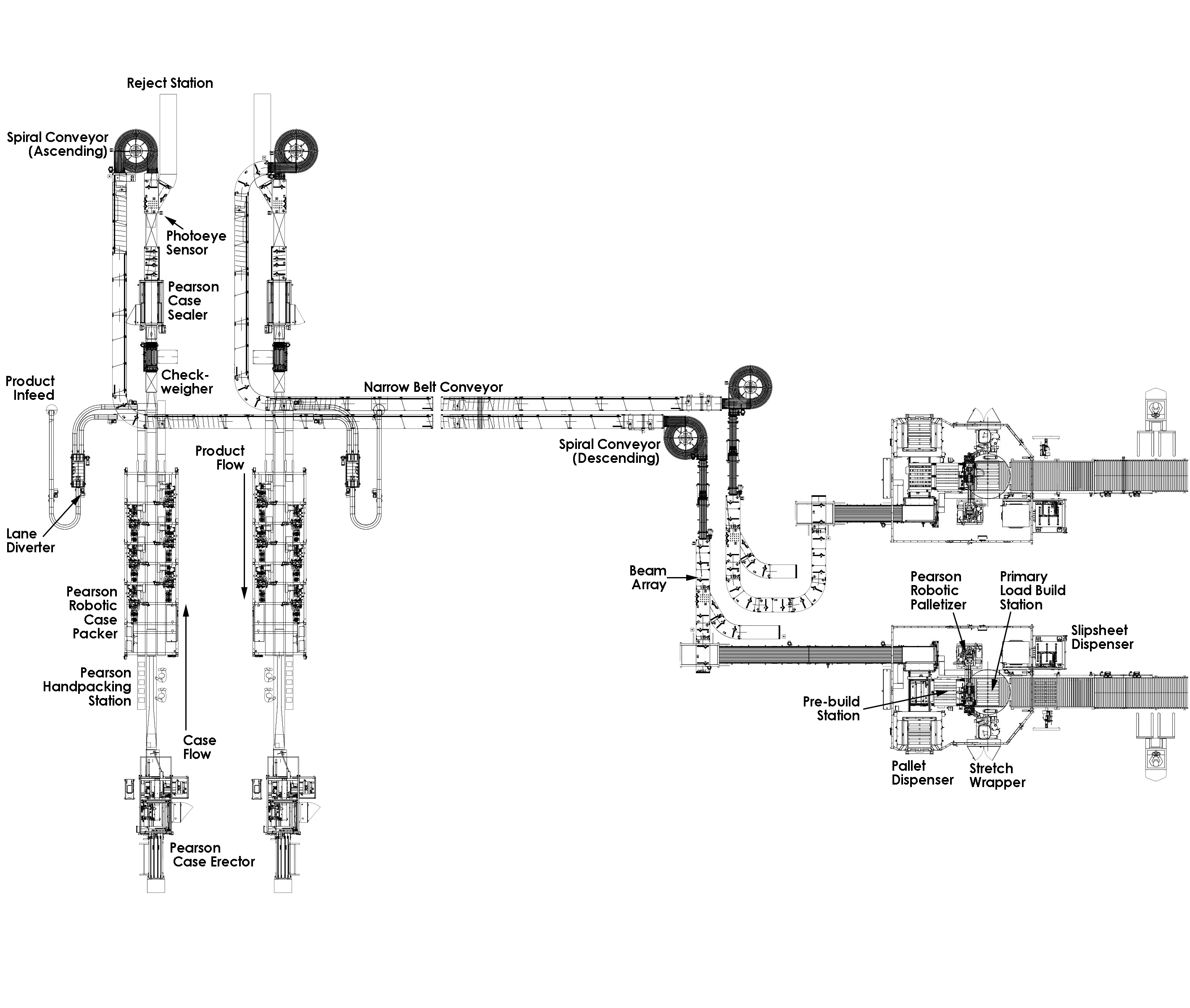Wet wipe pouches enter the secondary packaging line and split into two lanes via a lane diverter. A 90° jump transfer moves the product toward the robotic case packing or handpack station, where side belts center the product on the conveyor for efficient picking.
Simultaneously, knockdown RSC cases are formed on the case erector using servo-driven vacuum set-up arms. The erected RSCs are then conveyed to the robotic case packer or handpack station.
Per line, six robotics use vision and tracking to identify the pouches’ position and orientation, and then pick and load the product into cases using articulated motion.
Full RSCs are discharged from the packing station and transported over a checkweigher to a case sealer, where the top flaps are folded and sealed using pressure-sensitive tape.
Cases are then conveyed past a photoeye that detects open flaps, and flawed cases are rejected from the system.
A spiral conveyor elevates the sealed RSCs to the second floor and transports them on a narrow belt conveyor that allows for close pack accumulation. A second spiral conveyor returns cases to the first floor where they are conveyed through beam arrays that ensure correct orientation for palletizing. Upon approaching the palletizing cells, a pallet and a slipsheet are released from their respective dispensers.
Per cell, a palletizing robot then stacks the cases, inserting slip sheets as needed. If the primary load build station is occupied by a pallet being stretchwrapped, the palletizer uses an upstream pre-build station instead. After the stretchwrapped pallet is conveyed downstream, the prebuilt pallet will convey to the load build station where the stack is either completed or stretchwrapped for stability.
The full pallet is conveyed downstream and the sequence repeats.



